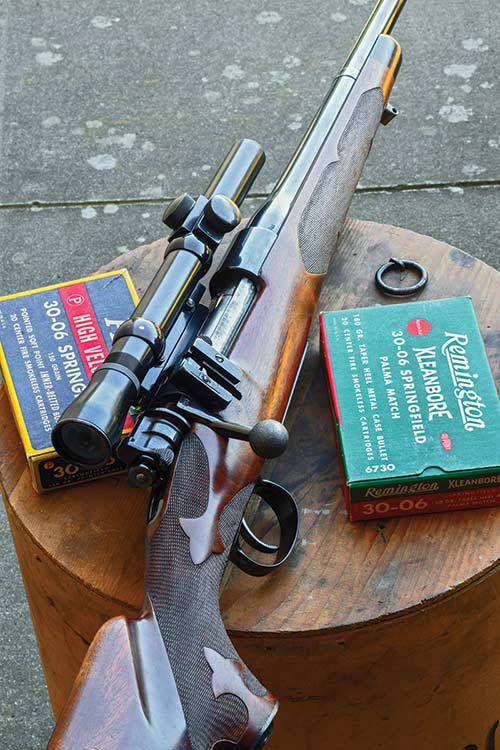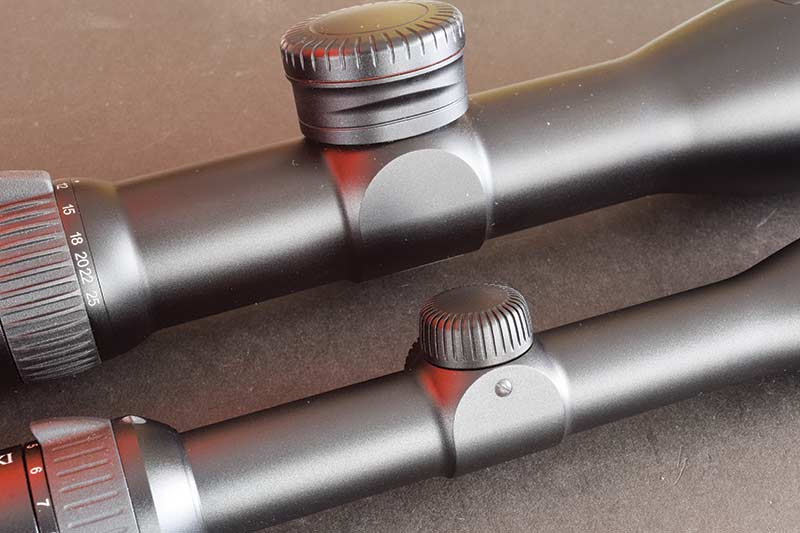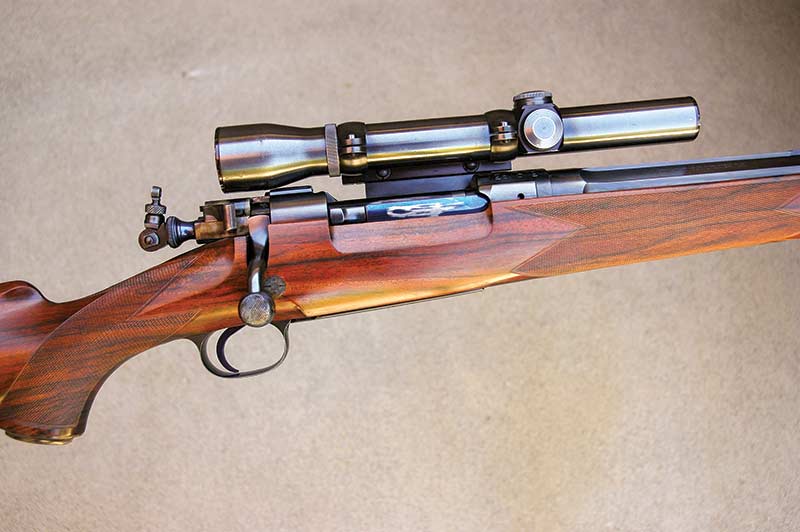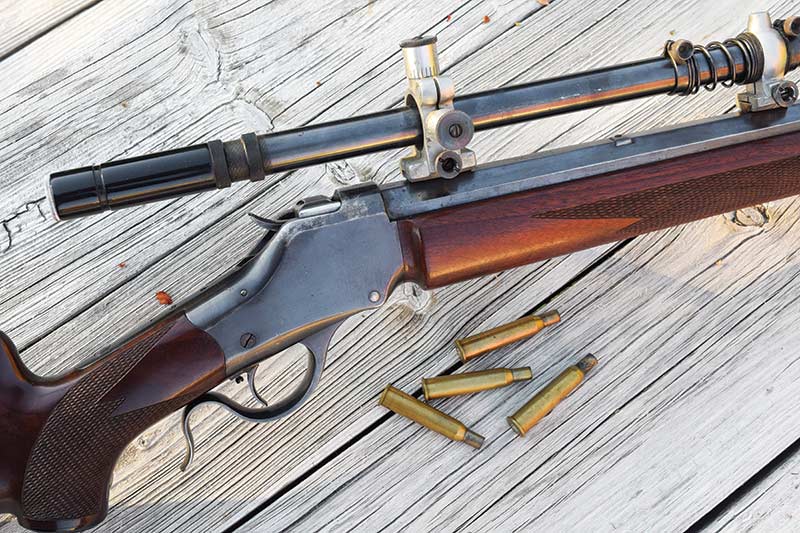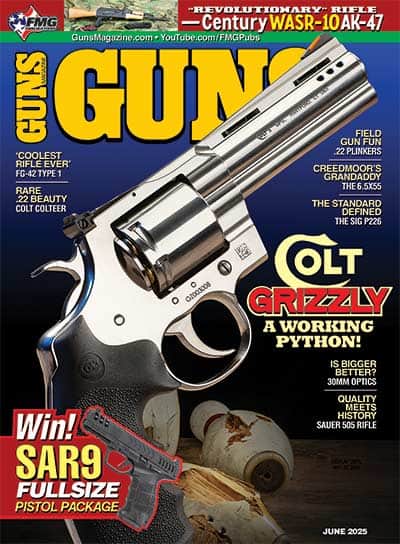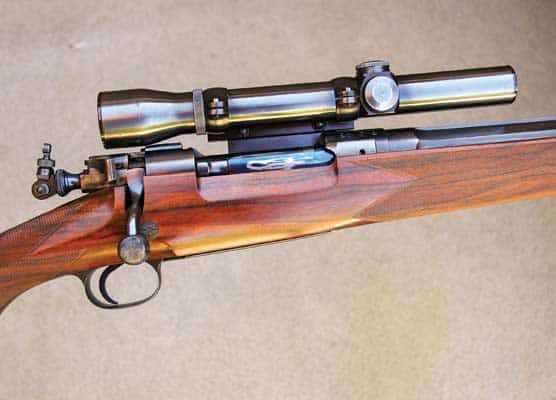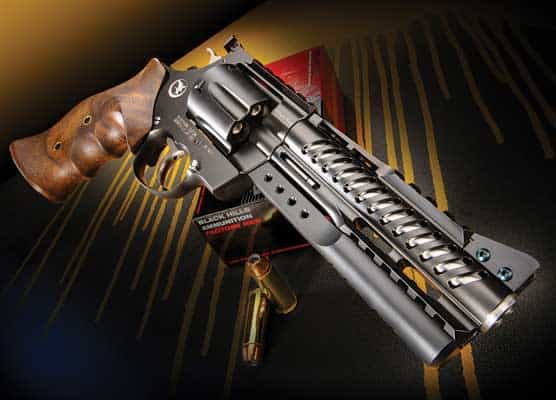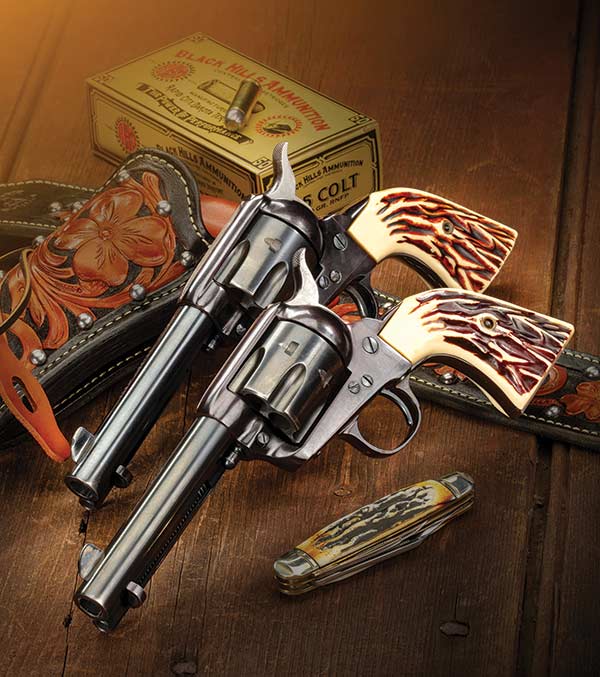30mm: The New 1"
Scope Tubes Have Grown Again
Scopes are bigger and heavier now because we demand more of them. We want brighter images in low light and at the same time, higher magnification, so scope-makers install bigger objective (front) lenses to increase the bundle of light that reaches our eye (the optic’s exit pupil). We want a big field of view (FOV) with high magnification and, at the same time, enough eye relief to keep our noggins intact during recoil. So the ocular (eyepiece) lenses grow.
To eliminate parallax and sharpen target focus at all ranges, we get a left-side turret dial. Lighted reticles add batteries and circuitry and yet another dial. In a frenzied stampede to versatility, we lust for expanded power ranges in variable scopes. To keep targets from sinking from the reticle’s adjustment range at a mile, we want more elevation in dials that help us count rotations.
The sharp, brilliant images and reliable performance of hunting scopes of all dimensions, and the amazing hits scored at extreme range with target scopes, are possible only because shooters have chased such features — and manufacturers have supplied them.
Progress is a constant re-shuffling of priorities and a sifting of trade-offs.
Getting Bigger
One of the most obvious changes in the evolution of rifle-scopes is in tube diameter. Because the tube size limits the internal erector assembly — lenses that move with windage and elevation (W/E) adjustment — it affects what you see, how well you see it and how much you can dial for a zero.
Weaver’s B4 and B6 appeared in 1954, follow-ons to the G4 and G6 produced from 1947. All had ¾” tubes per Bill Weaver’s first scope, the 3x 330. He’d designed it, and tooling to build it, in 1930 in a small shop in Newport, Ky. The 4x 440 followed. Subsequent 333, 344 and 355 models failed as hunting scopes due to their short 2″ eye relief. The 3x 329, which retailed at $4.75, came in 1935.
Popular sights on rimfire rifles, Weaver B-series and concurrent J-series scopes endured through 1966. A “C” version of the 330 served the U.S. Army on Springfield 1903A4 sniper rifles during WWII.
In the 1930s and ’40s, other scopes with ¾” tubes appeared. Most sold under the maker’s name: Fecker, Lyman, Norman-Ford. Gun-maker O.F. Mossberg produced a flurry of affordable hunting scopes. Target shooters bought R.A. Litschert’s target models in 10x to 30x. At Depression’s end, the 2.5x Lyman Alaskan and Rudolph Noske’s 2.5x and 4x scopes had 7/8″ tubes. All else equal, bigger lenses boost resolution.
Credit Bill Weaver for pioneering the 1″ tube. Appearing on his K2.5 and K4 in 1946, it would soon be adopted industry-wide. At the same time, however, European and some North America-based optics companies peddled scopes with 26mm tubes (1.02″). Notable among these: Kollmorgen (and those sold as Stiths and Redfields), Pecar (an imported Koehler scope, from Germany) and the Lyman Challenger and Wolverine. Zeiss listed 26mm scopes into the 1970s, Kahles into the mid-’80s.
Having owned several scopes with 26mm tubes, I can’t recall the first 30mm scope to follow me home. During the mid-1980s, when Kahles was still building fixed-power Helia scopes on 26mm tubes, it listed Helia variables with four-times magnification ranges that had 30mm tubes. Since then, 30mm has become the new standard for top-end hunting and target scopes.
The Latest
New-for-’25 scopes that impress me include Swarovski’s Z5+ series. Like 1″ Z5 models, each Z5+ has five-times power range. But all three — 10×42, 3.5-18×50 and 3-25×56 — boast 30mm tubes. This increase in diameter is largely responsible for a greater W/E adjustment range: three times the range of original Z5s, according to Swarovski. The 3.5-18x and 5-25x have focus/parallax dials. All Z5+ scopes are offered with illuminated reticles (“i”) and what the company has dubbed its ballistic turret (“BT”) to help with long-range shooting. Each of these features adds about 1 ¼ oz. to the scope’s weight and $100 to its price. All reticles save the non-illuminated 2-10×42 are glass-etched. Add a Personalized Ballistic Ring (PBR) for “dial-to-the-distance” convenience with your pet load. The 2-10×42 weighs less than 15 oz. and starts at $1,649. It’s a handsome scope that would excel on any rifle for hunting any game anywhere.
Trijicon too, has new 30mm scopes. The Huron and Ascent series have each added a 1-6×24 and a 4-16×50. There are a few minor cosmetic differences. I’m told the Ascent clears some military bar. The Hunter BDC reticle should sell well in the Huron, which is also available with my favorite, the German #4. The Ascent comes with a Ballistic Drop Compensating (BDC) crosswire. All are second-plane reticles.
Vortex has earned a place in long-range matches with powerful glass in 34mm tubes. A 6-36×56 Gen III Razor HD with graduated first-plane reticle weighs in at 45 oz. and $4,800. Shooters with kids in college can get the 34mm tube and FFP reticle in the 30-oz. Strike Eagle 5-25×56 for $1,150, the 35-oz. Venom 5-25×56 for $700. But of 50 models on Vortex’s website, I find the Razor HD LHT 3-15×42 most fetching. At 19 oz. with a 30mm tube and SFP reticle, it mates well with hunting rifles but has the power for hits out yonder for $1,900.
A 30mm tube can house all the reach and precision and optical excellence you’d want in a scope. A friend has a Nightforce NXS 5.5-22×50 optic on a Sterling Precision rifle. With this outfit and dialing for center holds, he pulverizes rocks at 1,300 yards. At 1,700, he adds 9 minutes of lift with the reticle’s one-minute hash marks. His 140-grain Berger bullets fly for over three seconds.
Having long championed the light weight and slim profile of 1″ hunting scopes, I’ve taken up with 30mm 1.5-6x scopes. At 4x, my preferred setting, the 24mm clear objective yields a 6mm exit pupil, about as much light as the human eye can use in dim shooting light. To discern detail at, say, 300 yards, I can get 6x from the dial and a view like that with the naked eye at 50. Power enough. Without a front bell, the scope sheds weight, doesn’t interfere with a rear sight and can be mounted low on the receiver.
Yes, a 1.5-5×20 with 1″ tube is mighty fetching too. But you wouldn’t want to be the only sod in deer camp without a 30mm scope.
